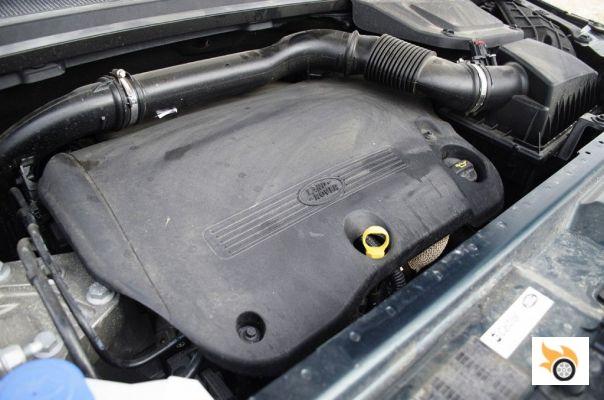The VIN consists, in the case of modern vehicles, of 17 digits, where through some codes we can know the country where the vehicle was manufactured, the brand, the manufacturer (do not have to match brand and manufacturer), the type, the production number, etc.. There are also cars with 18-digit VIN. These are those that have undergone a replacement of the part where the VIN is stamped. The factory sends the stamped part with the original VIN followed by an R to the workshop.
Exceptions to this are always older vehicles, whose VINs do not necessarily have to be 17 digits long. This is especially important to historians and collectors, as certain VINs can mean a much higher value, such as the first unit of all, or the one that identifies a very specific car, such as Elvis Presley's BMW 507 Roadster.

All this, in ITV, is reduced to checking the number stamped with the one that appears on the technical data sheet. It is therefore necessary to know the location of that number. It must be stamped or engraved in an accessible place on the frame or self-supporting structure. The VIN also appears on the manufacturer's plate and often in a "little window" at the bottom of the windshield, but they are not valid for the ITV check.
In many cases it is easy to locate: engine area, under the passenger seat, in the wheel arch; in other cases it is not so easy: under the spare wheel, between the rear seats and the boot area, by removing a cover with screws, etc.
And the following question may arise: What if when we go to pass ITV they can't find it or it looks bad? And what if it doesn't match?
Both questions are tricky, and the answer to both of them is even trickier: it is the user's duty to keep his vehicle in good condition and also to know its characteristics. Here we will see how to proceed in these two cases:
1. Sometimes it happens that the VIN is not where it should be. In this case we have to make sure that it is not in another place, because sometimes it can be backstamped in another part of the vehicle (we will explain the concept of backstamping a little later). It can also happen that the VIN is totally or partially oxidized and therefore not completely legible. If we are sure that the VIN is not on any part of the chassis, it is the duty of the ITV to issue an unfavourable verdict due to the non-existence or impossibility of finding it. The steps to follow from now on are as follows:
- Conformity report from the vehicle manufacturer, indicating that the vehicle, with its registration and VIN number, must correspond to an engine and/or gearbox code (with its serial number).
- Responsible declaration of the vehicle owner stating that he/she is aware of the non-existence/deterioration of the VIN and the possible reasons why this may have happened.
- A new VIN is stamped at the MOT or workshop (with the corresponding declaration of responsibility). In addition, the ITV must reflect this new number on the technical data sheet, indicating exactly where on the chassis it has been engraved. The number to be assigned is determined by the following digits and their meaning:
- MXXYYY000 (M - Madrid, XX - Station Code, YY - Year, 000 - Correlative numbers that indicate the number of retroquelados that this station is doing.
- The customer must go to the traffic department to indicate the new VIN number and have the vehicle's registration certificate updated.

2. If the VIN of the vehicle does not coincide with that of the technical inspection card, it is also the duty of the ITV to issue an unfavourable result due to the non-coincidence of the same. There are several reasons why this may be the case:
- The technical data sheet of another vehicle is being used (theft, error, etc).
- Mistake when writing the VIN in the technical sheet by the manufacturer or by some ITV when making a duplicate of the same.
- Interchange by mistake of the assignment of license plates to two vehicles that have been registered in Traffic at the same time (more common than it seems, someone is going to register two vehicles in Traffic and by mistake the license plate numbers are exchanged). This fault is usually identified on the day of the first ITV.
In these cases it would not be necessary to make a retroquelado. To solve this, it is necessary an error correction report from the manufacturer or the person responsible for the error, indicating the correct VIN. In addition to these situations, it can occur for example the installation of turret bars, which are not reform, but would not be authorized if they cover all or part of the VIN.
As a curiosity, it should be pointed out that in some Autonomous Communities, before the customer pays, the VIN is checked against the technical data sheet, but the most common practice is to check it against the rest of the points in the Inspection Manual.

























